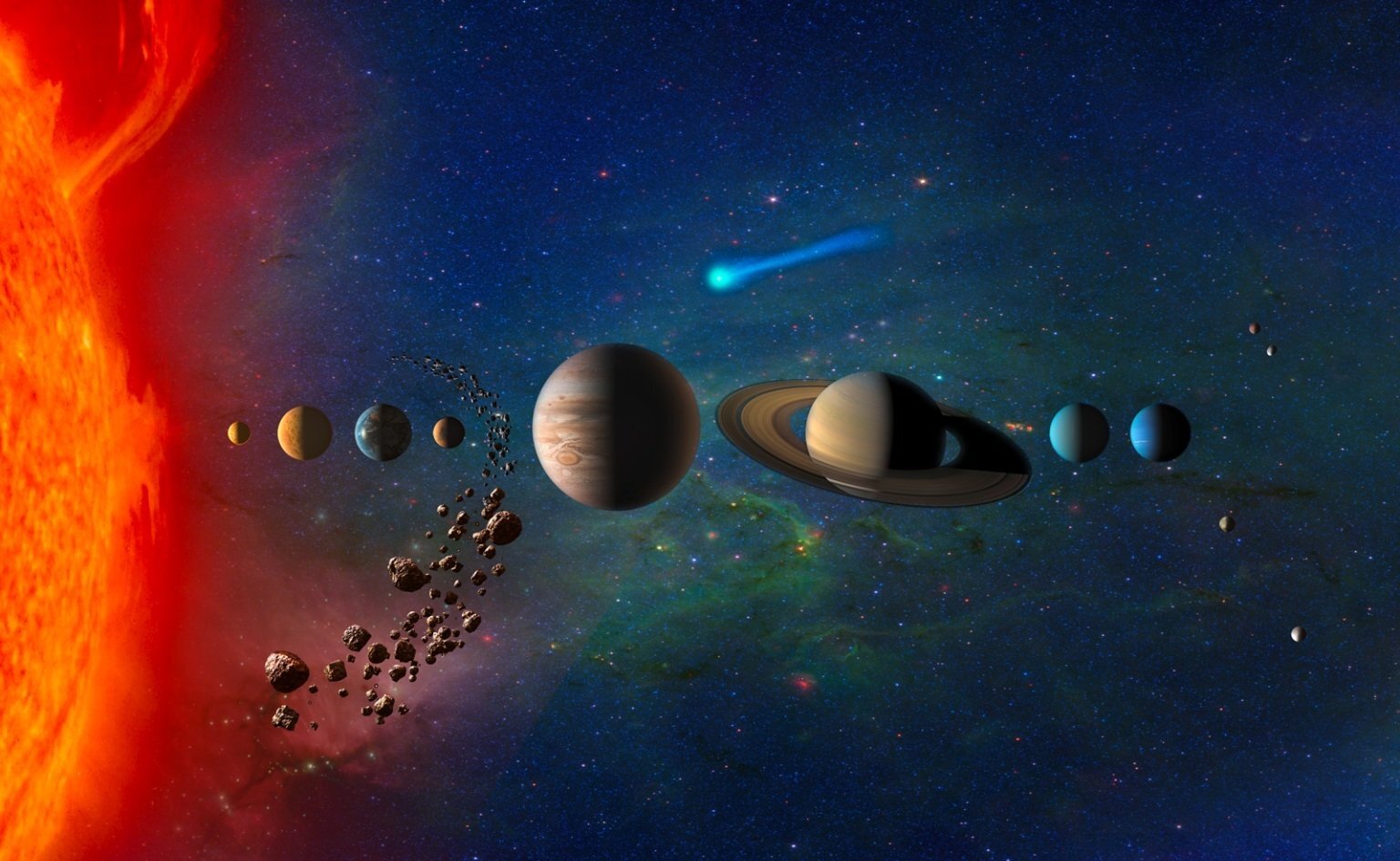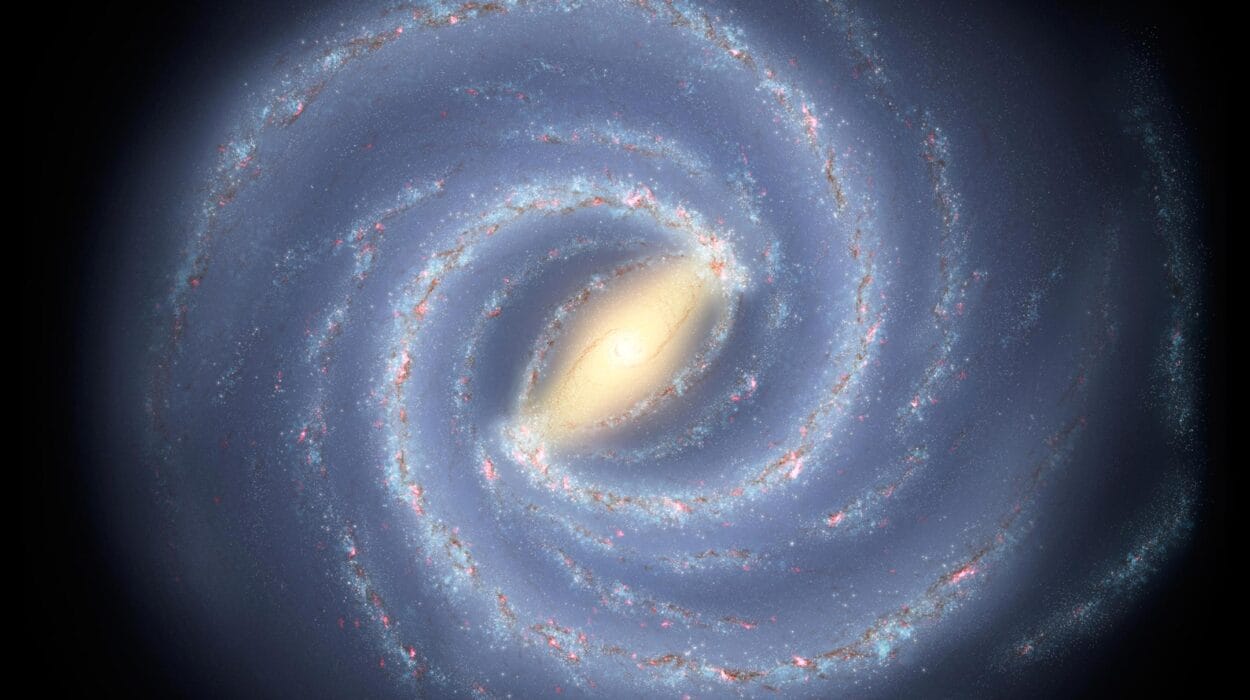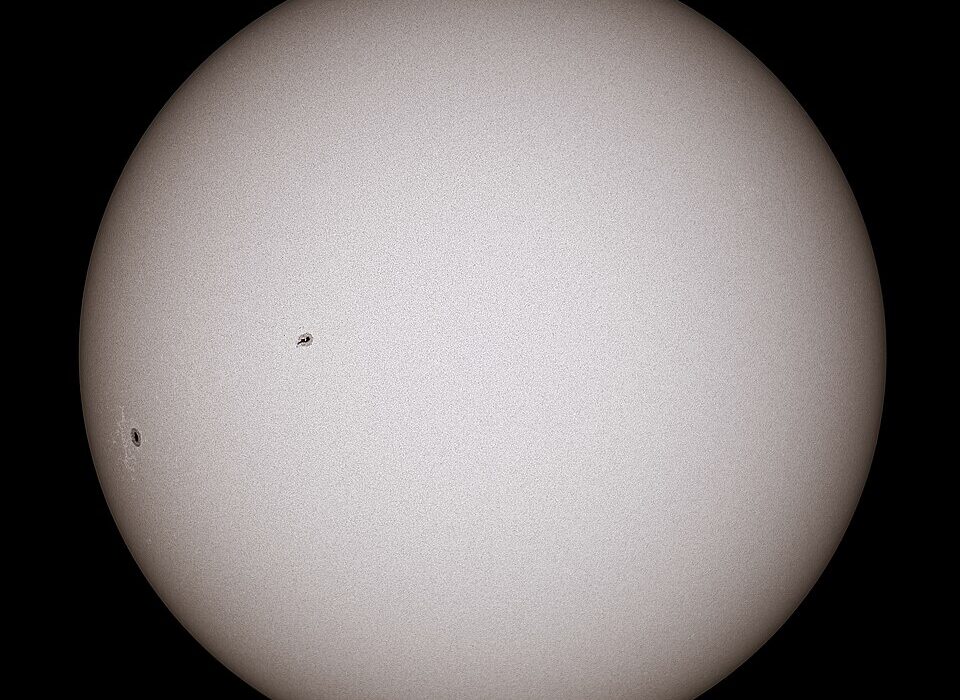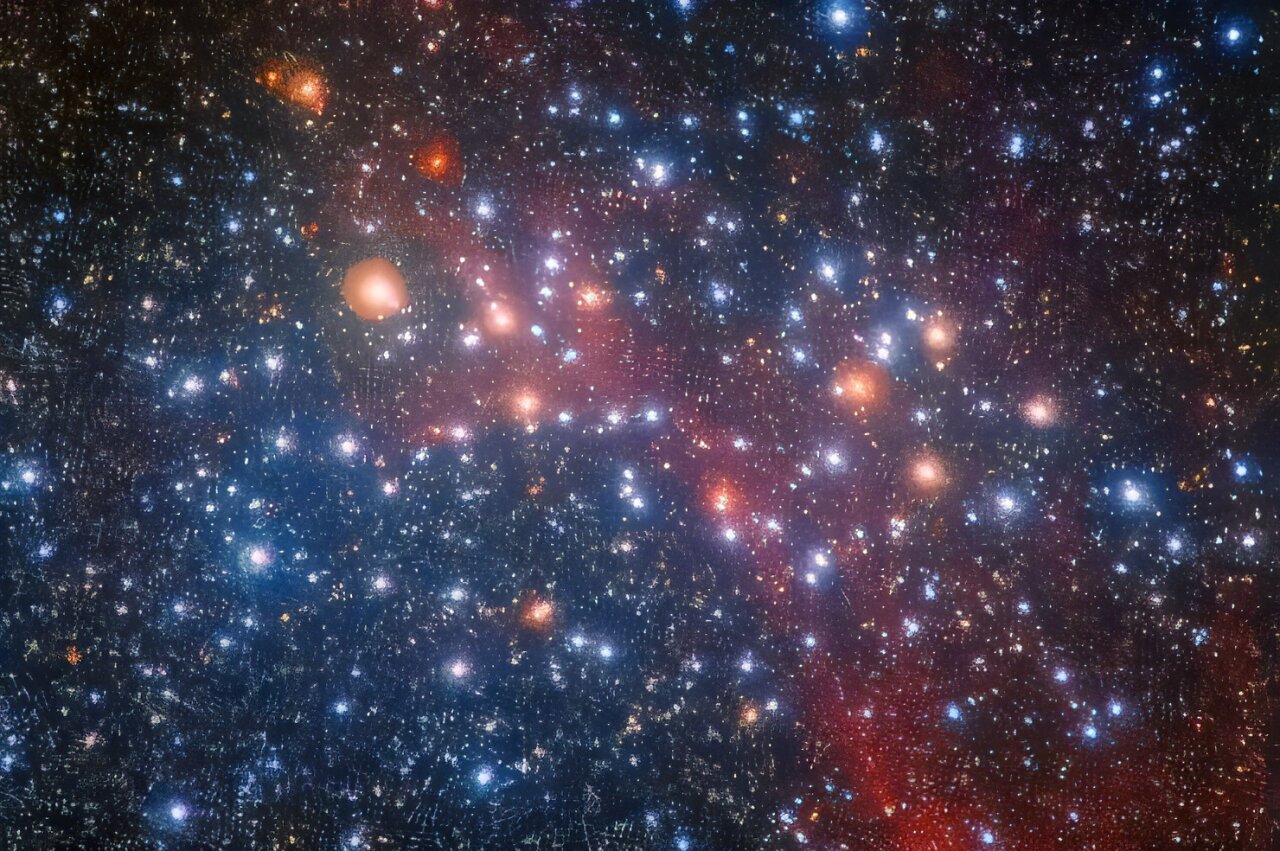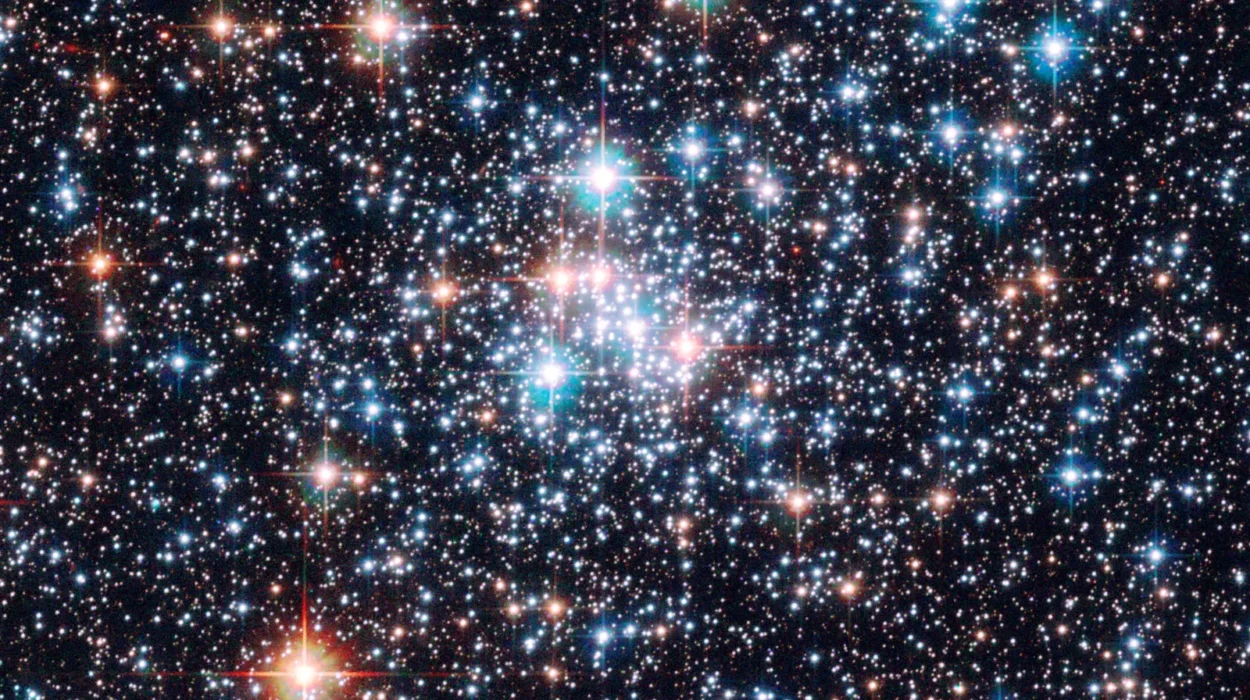For centuries, astronomers have gazed skyward, working to decode the cosmic choreography that governs our solar system. They’ve modeled planetary orbits, traced their origins, and attempted to predict their futures with increasing precision. But what if one of the greatest influences on the future of our solar system doesn’t come from within it—but from the stars drifting silently beyond?
A groundbreaking new study proposes just that: the idea that wandering stars, passing near our solar system over the next few billion years, could jostle the planets from their orbits. The findings suggest that the cosmos isn’t quite as calm and predictable as we thought. Our solar system may be far more vulnerable to external cosmic nudges than traditional models ever imagined.
A Universe in Motion: The Case for Cosmic Encounters
Historically, models of planetary dynamics have treated the solar system as a neatly closed system. The gravitational pull of the Sun and the orbital tugs of the planets themselves have long been considered the main drivers of orbital behavior. These models have charted trajectories across billions of years, using the known laws of Newton and the refinements of Einstein, all under the assumption that the solar system is effectively isolated.
But space is anything but static.
Within the Milky Way, our Sun travels through the galactic disk, sharing space with more than 100 billion other stars. As it moves, it encounters neighboring stars—some drifting by harmlessly at vast distances, others coming disconcertingly close. Although these stellar flybys may seem rare and distant, they happen more often than you might think. Every few hundred thousand years, a star passes within a light-year of the Sun.
While most such flybys have minimal gravitational influence, a few close encounters—if timed just right—could destabilize the fragile balance of planetary orbits. Now, thanks to new simulations, researchers are beginning to quantify just how serious those threats may be.
Revisiting an Age-Old Question: Are Planetary Orbits Truly Stable?
The idea that planetary orbits might not be eternal has ancient roots. Isaac Newton himself suspected that over immense time spans, the cumulative effects of planetary tugs could cause orbits to become unstable. However, lacking the mathematical tools to explore such long-term consequences, he left the problem unsolved.
By the 18th century, mathematicians Pierre-Simon Laplace and Joseph-Louis Lagrange believed they had proven otherwise: that planetary orbits oscillated in perfectly stable, wave-like patterns. But further refinements from Carl Friedrich Gauss and Urbain Le Verrier in the 19th century—along with observations of previously unknown planets like Uranus and Neptune—revealed that those wave-like patterns could decay over time.
Then came Henri Poincaré in the early 20th century, who threw a wrench into celestial mechanics by proving that the famous “Three-Body Problem”—predicting the behavior of three gravitationally interacting bodies—has no simple analytical solution. It marked the dawn of chaos theory in astrophysics and highlighted the possibility of unpredictable outcomes, even in deterministic systems.
In short, the question of orbital stability has lingered for centuries. And now, new simulations suggest that outside influences—specifically passing stars—may be a critical part of that story.
The Study: Simulating Billions of Years of Gravitational Encounters
To investigate this problem, planetary scientists Nathan A. Kaib (of the Planetary Science Institute) and Sean N. Raymond (of the Laboratoire d’Astrophysique de Bordeaux) undertook an ambitious computational project. They used NASA’s Horizons System—an advanced orbital data platform developed by the Jet Propulsion Laboratory—to recreate a highly accurate version of the present-day solar system. Then, they ran 2,000 separate simulations, projecting the system forward five billion years into the future.
In half of those simulations, the solar system evolved without interference—just the internal gravitational ballet of the planets. But in the other half, the researchers injected hypothetical stellar flybys, with properties (masses, velocities, distances, and frequencies) chosen to match real-world expectations for our region of the Milky Way.
What they found was astonishing.
Adding stellar flybys to the mix reduced the solar system’s long-term stability by roughly 50 percent. In many cases, the influence of a passing star—despite being minimal at the moment of encounter—accumulated slowly over time, eventually nudging planets off-course or even ejecting them from the system entirely.
Chaos in the Outer Realms: Gas Giants and Pluto Are Especially Vulnerable
The study’s most surprising revelation may be that the orbits of the outer planets—especially the ice giants Uranus and Neptune, along with dwarf planet Pluto—are not nearly as stable as once thought.
Even in simulations where a passing star did not immediately eject a planet, its gravitational fingerprint could linger like a bruise, subtly altering orbital shapes and speeds. These small changes can push the outer planets into new gravitational relationships, sparking chaotic chain reactions that ripple inward.
Pluto, in particular, appears more vulnerable than previously assumed. Whereas older models gave it a near-100% chance of survival over five billion years, Kaib and Raymond’s results show that there’s roughly a 5% chance it could be destabilized—booted from the solar system entirely—by stellar influences.
And while the rocky inner planets—Mercury, Venus, Earth, and Mars—are more tightly bound to the Sun, they’re not completely immune. The simulations suggest a roughly 1% chance that their orbits could be thrown into chaos in the distant future.
The Role of Time: Why Effects Take Billions of Years to Show
One of the most important insights from this work is that the influence of passing stars isn’t immediate. Rather, it’s a slow burn. The gravitational nudge delivered during a flyby might be almost imperceptible in the short term. But over hundreds of millions—or even billions—of years, that tiny deviation can amplify.
This is a key reason why stellar flybys have historically been ignored in dynamical models of the solar system. Shorter simulations, spanning only tens or hundreds of millions of years, gave the misleading impression that passing stars were inconsequential. Only by extending their models over the Sun’s remaining lifetime did Kaib and Raymond uncover the full extent of the risk.
Their results also suggest that if such a destabilizing flyby is going to happen, it’s more likely to occur sooner rather than later. Statistically, the solar system’s chance of encountering a disruptive star in the next four billion years is significantly higher than in the fifth.
A Galactic Footprint: Stellar Flybys and the History of Our Solar System
Importantly, this isn’t just a story about the future. The past is also littered with potential stellar encounters.
There is increasing evidence that the solar system has already been shaped, in part, by past flybys. For instance, the unusual orbits of some trans-Neptunian objects (like Sedna) have been interpreted as possible evidence of a close stellar passage early in the solar system’s history. Some models even propose that the enigmatic Planet Nine—if it exists—was perturbed into its distant orbit by a long-gone stellar visitor.
Kaib notes that the same statistical risk of future destabilization likely applied to the solar system’s past. Although it appears we didn’t experience any flyby catastrophic enough to eject a planet, subtle perturbations may already be baked into the current architecture of our planetary system.
In other words, the solar system may already carry the fingerprints of ancient stellar encounters, etched into the orbits of our most distant worlds.
Implications Beyond the Solar System: Exoplanets and Galactic Dynamics
The implications of this work extend far beyond our local celestial neighborhood. Today, astronomers have cataloged thousands of exoplanets orbiting distant stars. Many of these systems show signs of past chaos—planets on extreme orbits, others missing altogether, and still more caught in strange resonances.
Kaib and Raymond’s research suggests that stellar flybys could be a missing piece of the puzzle. While internal dynamics (like planet-planet scattering) can explain some of the instability in exoplanet systems, the role of external perturbations is often overlooked.
By showing that even a relatively placid system like ours is susceptible to external chaos, the researchers have highlighted an important mechanism that could have shaped planetary systems throughout the galaxy.
From this perspective, the solar system might not be the exception—it might be the rule. And perhaps our system’s apparent calm is more fragile, and more fleeting, than we imagined.
Peering into the Future: What This Means for Earth and Humanity
While the potential destabilization of the solar system sounds ominous, it’s important to put the findings into perspective. Even in the worst-case simulations, planetary ejections or collisions typically occur billions of years from now—long after Earth has likely become uninhabitable due to the Sun’s transformation into a red giant.
Still, these findings underscore a profound truth: our place in the universe is neither fixed nor guaranteed. Despite the majestic regularity of planetary orbits, chaos lurks on the edges, quietly waiting for the right cosmic nudge.
And in the deep future, perhaps long after humanity is gone, a passing star may finally rewrite the structure of our solar system, reshuffling the planets in an invisible celestial game of billiards.
A Fragile Harmony in a Restless Galaxy
This research invites us to reimagine the solar system—not as a sealed-off sanctuary, but as part of a dynamic, ever-shifting galactic environment. Stars wander. Planets drift. And over spans of time that defy human comprehension, even the most seemingly permanent celestial arrangements can unravel.
The cosmic stability we take for granted is, in truth, a balance on a razor’s edge—sustained not by certainty, but by chance. And in that realization lies a kind of cosmic humility: a reminder that we are passengers on a fragile ship, floating through a universe both beautiful and unpredictable.
In the end, the solar system may be less of a clockwork and more of a dance—one choreographed not only by its internal forces, but by the occasional, unseen partners that pass by in the dark.
Reference: Nathan A. Kaib et al, The influence of passing field stars on the solar system’s dynamical future, Icarus (2025). DOI: 10.1016/j.icarus.2025.116632
